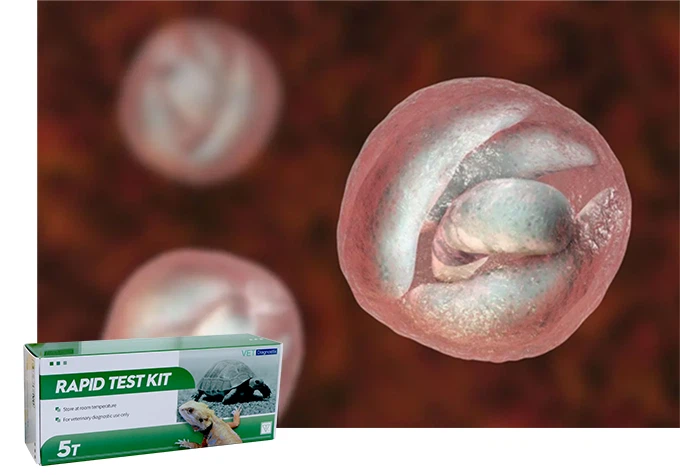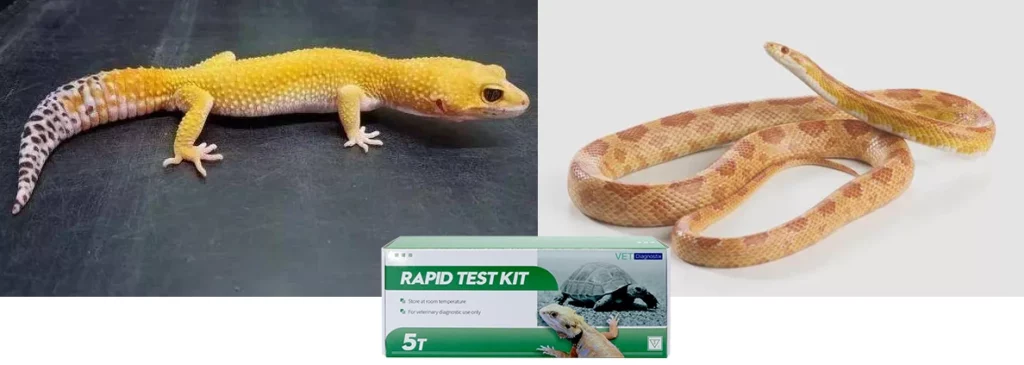Cryptosporidium is a parasitic disease caused by a parasite of the genus Cryptosporidium that can infect the stomach and small intestine of reptiles. These parasites can infect many different species of reptiles, including lizards, snakes, turtles and tortoises.
Here we will discuss Cryptosporidium in snakes and lizards.
Typical symptoms of the disease vary depending on the type of parasite that infects the snake or lizard, and the different organs that are infected. The two main areas these parasites infect are the stomach and small intestine. When the stomach becomes infected, you’ll see symptoms such as vomiting, weight loss, and a noticeable bulge in the abdomen. When the small intestine becomes infected, you may see diarrhea, weight loss, and poor growth in the animal.
The parasite appears to cause a highly contagious progressive disease (a slow infection that gets progressively worse) in snakes and lizards that is difficult to treat.

Cryptosporidium is spread through feces, and the oocyst form can survive for several years. Only high temperature steam and some disinfectants can kill the oocysts. If the oocysts are swallowed by another reptile, the animal’s small intestine, which is the most important place for absorbing nutrients from food, becomes infected. When Cryptosporidium infects cells in the stomach or small intestine, those cells swell. The swelling of the cells greatly reduces the ability of the stomach and small intestine to digest food, so the animal gradually loses weight. This swelling is usually seen in the stomach area of the snake.
Snakes and lizards living in inhospitable housing conditions such as inappropriate temperature ladders, overcrowding, poor sanitation (fecal accumulation, accumulation of food and other waste in cages, transfer of waste and contaminated Substances), new animals skipping quarantine or quarantine time is not long enough, which new animals are more likely to carry Cryptosporidium oocysts and spread Cryptosporidiosis on their bodies and living spaces.

Given the wide variety of reptiles diagnosed with cryptosporidiosis, almost any kind of snake or lizard could be infected. For reptile cryptosporidiosis, age and sex susceptibility are unknown.

Prevention
Our goal is to strictly isolate cryptosporidiosis-positive animals, as it is highly contagious and difficult to treat and even harder to sterilize.
Quarantine
All incoming snakes and lizards should be quarantined to prevent the introduction of Cryptosporidium. Your veterinarian will discuss with you when and what screening tests to perform; it is important to follow these recommendations. In general, new reptiles are healthy with a good appetite, stable or gaining weight, and no detectable common infectious diseases before being released from quarantine or isolation. Geckos need to remain in good health for one month, snakes three months.
Isolation
Infected reptiles should be quarantined. This helps prevent the further spread of the disease and may free them from the stress of intense competition with cage mates. If infection is confirmed, all reptiles in the cage or any other reptiles that may have been directly or indirectly exposed to the disease should be quarantined.
Proper Sanitation and Sanitation
Caring for an infested reptile and its cage should only be started after all other reptile care has been completed. Wear gloves to care for animals, remove gloves after each care, and wash and sanitize hands well.
Prognosis
Unfortunately, cryptosporidiosis is not a directly treatable disease and many cases are incurable. If a reptile does not gain weight, increase activity, and show a willingness to feed itself within three weeks of treatment, its outlook is poor. The more information you tell your veterinarian, the more likely your veterinarian will help improve your reptile’s chances of survival.

